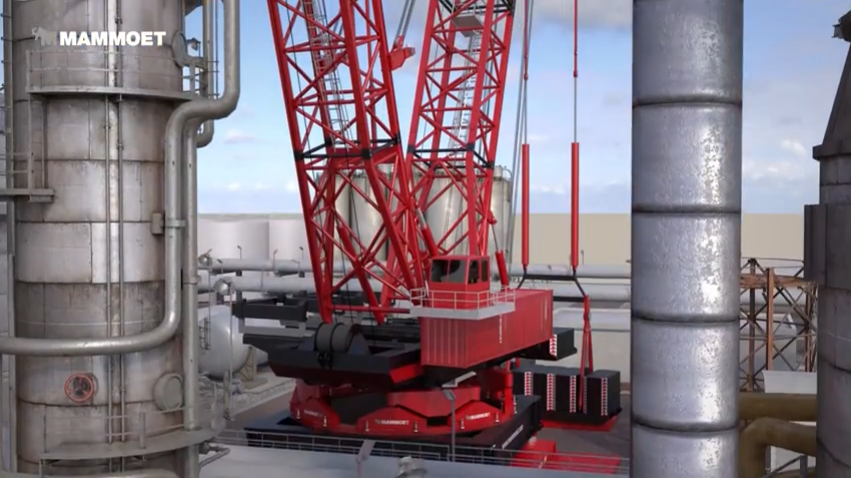New principles of crane construction stretch the limits of modular construction and redefine plant turnaround efficiency.
As companies operating in heavy industries continue to face highly competitive markets, Mammoet has recognized the valuable role lifting operations can play in improving economies of scale and cost effectiveness. Understanding that crane capabilities in these industries can contribute significantly to a project’s efficiency, Mammoet developed the Focus, a concept for a new type of heavy lifter that will revolutionize the way plant owners and EPCs think about construction efficiency, plant maintenance and turnarounds.
Following the concept announcement in September 2016, Mammoet conducted further consultation with its customers, realizing their need for greater lifting capacity and ease of maneuverability with fast (de)mobilization, particularly in limited and congested spaces.

A-Frame Focus
The A-Frame is designed to lift much heavier and larger modules in confined spaces. It’s capacity is second to none in the lifting industry. This new found efficiency in delivering module construction at ever larger scales will be a valuable asset to the FPSO market, providing significant project optimization and time saving benefits.
Y-Frame Focus
Combining much greater lifting capability, versatility and reach, the Y-Frame is the ideal lifting machine for use in plants with complex infrastructure and space limitations. It’s ability to be built up vertically and maneuvered with flexibility in very limited or congested areas will have a powerful effect on the efficiency levels of plant upgrades, maintenance and turnarounds.
With the introduction of the Focus, Mammoet has redefined the principles of crane fabrication and assembly. Some key innovative features of the Focus and their advantages are outlined below:
- The mast sections of the Focus are assembled from separate chords and braces. Conventional mast dimensions are defined by road transport limitations. Mammoet’s approach allows for larger dimensions in width and depth, creating stronger masts and greater lifting capacity. At the same time, the assembly method still allows for efficient, containerized transport. Furthermore, the separate chords and braces can easily be moved to any location on-site and assembled without interrupting productivity.
- The Focus is uniquely designed as a vertically self-erecting crane. Based on the principle of an extension ladder, the crane can be built vertically up to a height of 200 meters on an extremely small surface without compromising stability or strength. This is especially the case for the Y-Frame Focus which only requires a 22 by 22 meter surface.
- The jib is integrated in the design of the main boom in such a way that the Focus can switch from fixed boom to a luffing jib configuration without re-assembly. The jib position in the front boom is variable. This allows for tailor-made versatility that effectively deals with the height and type of buildings and structures the crane has to operate in.
- Due to the self-erecting principle, the back mast can be built up at the same height as or even higher than the main boom, which can significantly increase the lifting capacity for long back mast length and overall versatility of the crane.

Follow us on social media: